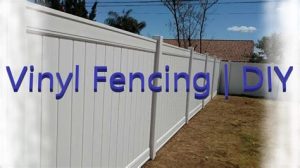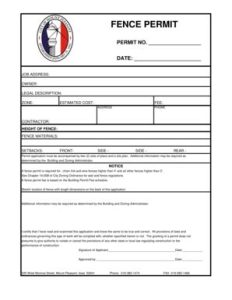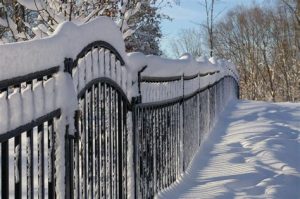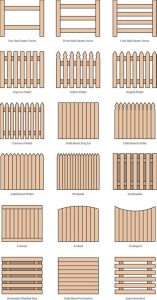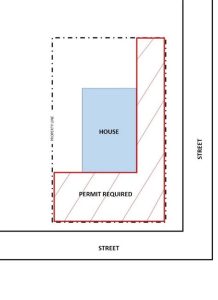Explore the history, design evolution, and architectural role of wrought iron fences, their advantages, and contemporary applications in modern landscaping.Iron fences have long been a symbol of elegance, security, and craftsmanship, captivating homeowners and architects alike for centuries. In this blog post, we will delve into the fascinating journey of rod iron fences, tracing their origins to the industrial landscapes of the past and exploring how their designs and functionalities have evolved over time. From grand estates to urban gardens, these formidable barriers have played a significant role in shaping architectural styles and landscaping aesthetics. Today, rod iron fences continue to stand out as preferred choices, boasting numerous advantages over other fencing materials. As we explore contemporary applications and the enduring appeal of rod iron fences, you’ll come to appreciate not just their historical significance but also their relevance in modern design. Join us as we uncover the rich legacy and timeless beauty of rod iron fencing.
Origins of Rod Iron Fences
The history of rod iron fences can be traced back to ancient civilizations, primarily in Europe. Initially, these fences were crafted by skilled blacksmiths who utilized wrought iron—a material known for its strength and malleability. The earliest examples of iron fencing can be found adorning the grounds of European castles and estates during the Middle Ages, serving both a practical and aesthetic purpose.
During the Renaissance period, the demand for more elaborate and decorative ironwork saw a surge. With the invention of new forging techniques, artisans began creating intricate designs featuring geometric patterns and floral motifs. This stage of development marked a significant transformation in how rod iron fences were perceived, elevating them from mere functional barriers to exquisite art pieces that added elegance to properties.
By the 18th and 19th centuries, the industrial revolution further advanced the production of rod iron fences, allowing for mass production and making them more affordable. This period saw a diversification in design, with an increase in both ornamental and functional styles. The combination of artistry and practicality ensured that rod iron fences became a staple in architectural landscapes across Europe and America.
Evolution of Design and Functionality
The evolution of rod iron fences is a fascinating journey that mirrors the changes in societal needs and aesthetic preferences. Initially crafted for practicality, these fences were designed to offer security and define property boundaries. However, as architectural styles evolved, so did the designs of these fences, leading to greater emphasis on ornamentation and artistic expression.
During the Victorian era, the designs of rod iron fences became more intricate, showcasing elaborate patterns and scrollwork. This period marked a shift from purely functional barriers to decorative elements that enhanced the overall aesthetic of buildings and gardens. As homeowners sought to showcase their wealth and taste, the functionality of these fences began to coexist with beauty, demonstrating a blend of both purposes.
In modern times, the design of rod iron fences continues to evolve with the incorporation of technology and innovative ideas. Modular designs and pre-fabricated panels have made installation easier, while advancements in coating techniques ensure longevity and resistance to corrosion. Contemporary designs now serve not only as a boundary but also as a statement piece in landscaping, combining functionality with sophisticated aesthetics.
Role in Architecture and Landscaping
Rod iron fences have played a significant role in both architecture and landscaping throughout history. Their elegance and durability have made them a favored choice for defining spaces in various environments, from residential yards to grand public parks. With their ornamental designs and sturdy construction, these fences not only serve a functional purpose but also enhance the aesthetic appeal of a property.
In architecture, rod iron fences complement a variety of styles, including Victorian, Gothic, and Modern. The versatility of their designs allows them to be tailored to match the unique character of a building. For instance, a classic wrought iron fence may feature intricate scrollwork and motifs, adding a touch of sophistication to a historic property, while contemporary designs can embrace minimalism, providing a sleek and modern boundary.
In landscaping, these fences are used to create distinct areas within a garden, define boundaries, or protect delicate plants and flowers. With their open design, rod iron fences do not obstruct views, allowing the beauty of a garden to shine through.
Advantages Over Other Fence Materials
When it comes to choosing the right fencing material, rod iron fences stand out for several reasons. They offer a perfect blend of strength, beauty, and longevity that many other materials simply cannot match.
One of the primary advantages of rod iron fences is their incredible durability. Unlike wood that can rot or be damaged by pests, or vinyl that can become brittle over time, rod iron is nearly impervious to environmental factors. This means that once installed, these fences can last a lifetime with minimal maintenance.
Additionally, rod iron fences provide an elegant aesthetic that is hard to replicate. The intricate designs and the ability to customize shapes and sizes allow homeowners to express their style. Furthermore, they add a sense of timelessness and sophistication to both traditional and contemporary landscapes.
Cost efficiency is another aspect worth considering; while the initial investment may be higher than alternatives like wood or vinyl, the long-term benefits—such as reduced maintenance costs and longevity—make rod iron fences a wise financial choice.
| Material | Durability | Aesthetic Appeal | Maintenance | Cost |
|---|---|---|---|---|
| Rod Iron | High | Elegant & Customizable | Low | Medium-High |
| Wood | Medium | Natural & Classic | Medium-High | Low-Medium |
| Vinyl | Medium | Varied Colors | Low | Low-Medium |
In summary, the advantages of rod iron fences over other materials include their unmatched durability, aesthetic appeal, and cost-effectiveness in the long run.
Contemporary Applications and Aesthetics
In the modern era, rod iron fences continue to make a significant impact in both urban and suburban environments. These fences, known for their durability and elegance, have been adapted to meet contemporary needs while staying true to their historical roots. Their versatile nature allows them to fit seamlessly into various landscaping and architectural styles, from minimalistic designs to more ornate settings.
One of the remarkable aspects of rod iron fences today is their ability to blend functionality with aesthetic appeal. They are often used to define property boundaries while enhancing the overall curb appeal of a home or building. For instance, sleek, modern rod iron designs can complement contemporary architecture, while more detailed, classical styles can enrich traditional homes. This diversity in design allows homeowners and architects to choose fences that resonate with their personal style and the character of their properties.
Moreover, the customization options available with rod iron fences have increased tremendously, thanks to advancements in fabrication technologies. People can select from a myriad of designs, finishes, and even colors, ensuring that each fence can be tailored to the owner’s specifications. As a result, rod iron fences not only serve as practical barriers but also as striking artistic statements, enhancing the beauty of landscapes and structures alike.
Frequently Asked Questions
What are the origins of wrought iron fences?
Wrought iron fences originated in the Middle Ages, primarily in Europe, where skilled blacksmiths developed techniques to mold iron into decorative shapes.
How did wrought iron fences gain popularity in America?
Wrought iron fences gained popularity in America during the 19th century, particularly during the Victorian era, as they became a symbol of wealth and status in both residential and commercial properties.
What are some common designs found in wrought iron fences?
Common designs of wrought iron fences include intricate scrollwork, geometric patterns, and classic motifs like fleurs-de-lis, which reflect both craftsmanship and artistic expression.
How do modern wrought iron fences differ from historical designs?
Modern wrought iron fences often incorporate contemporary designs and technological advancements, focusing on minimalism and durability while still retaining traditional elements.
What are the advantages of using wrought iron for fencing today?
Wrought iron offers numerous advantages, such as durability, low maintenance, a timeless aesthetic, and the ability to provide security without obstructing views.
Are there any environmental considerations regarding wrought iron production?
Yes, the production of wrought iron can have environmental impacts. However, many manufacturers are adopting more sustainable practices, including recycling and using eco-friendly processes.
How can homeowners incorporate wrought iron fences into their property?
Homeowners can incorporate wrought iron fences by choosing designs that complement their architectural style, using them for gardens or property boundaries, and integrating gates for functionality and security.
